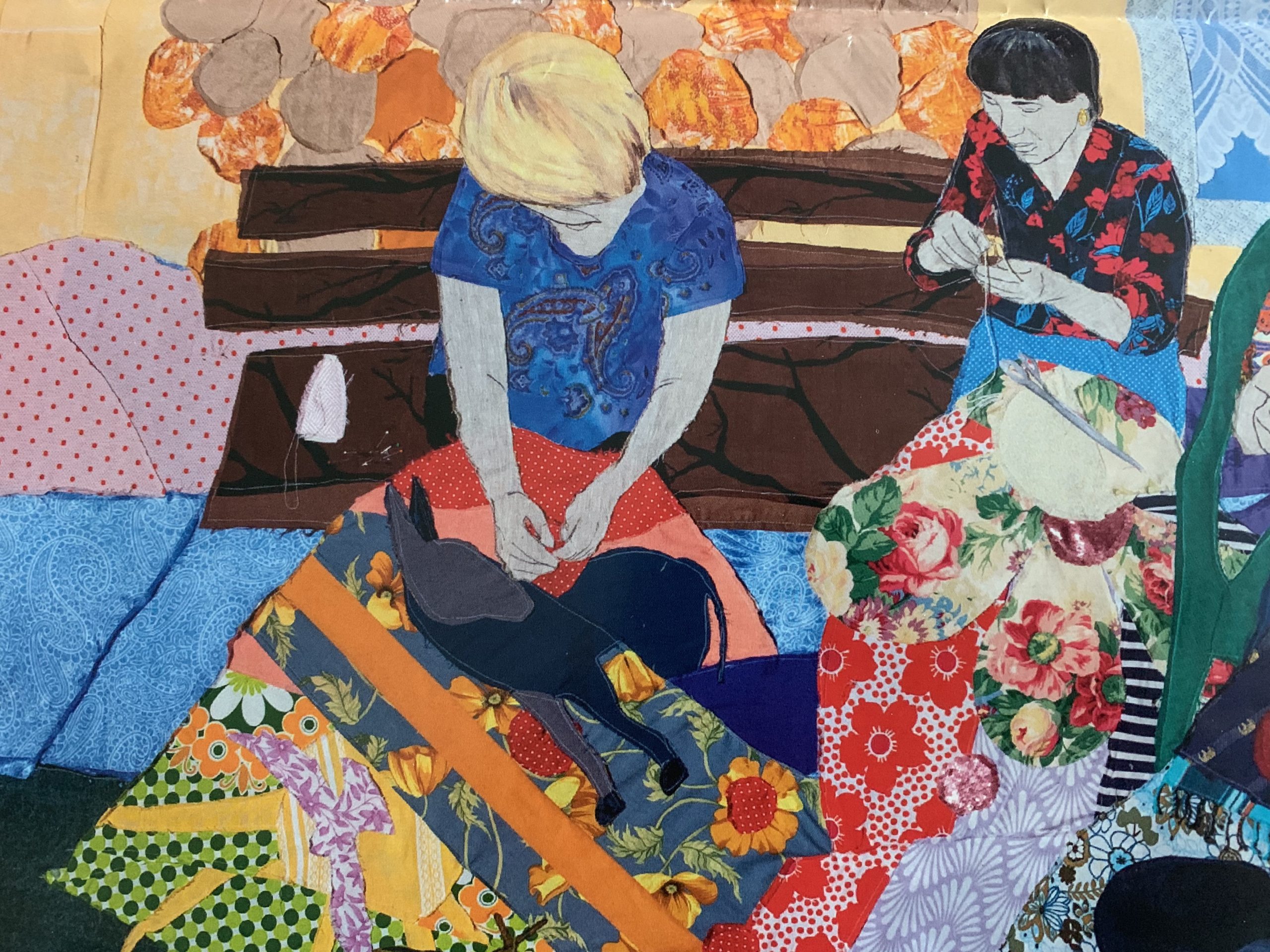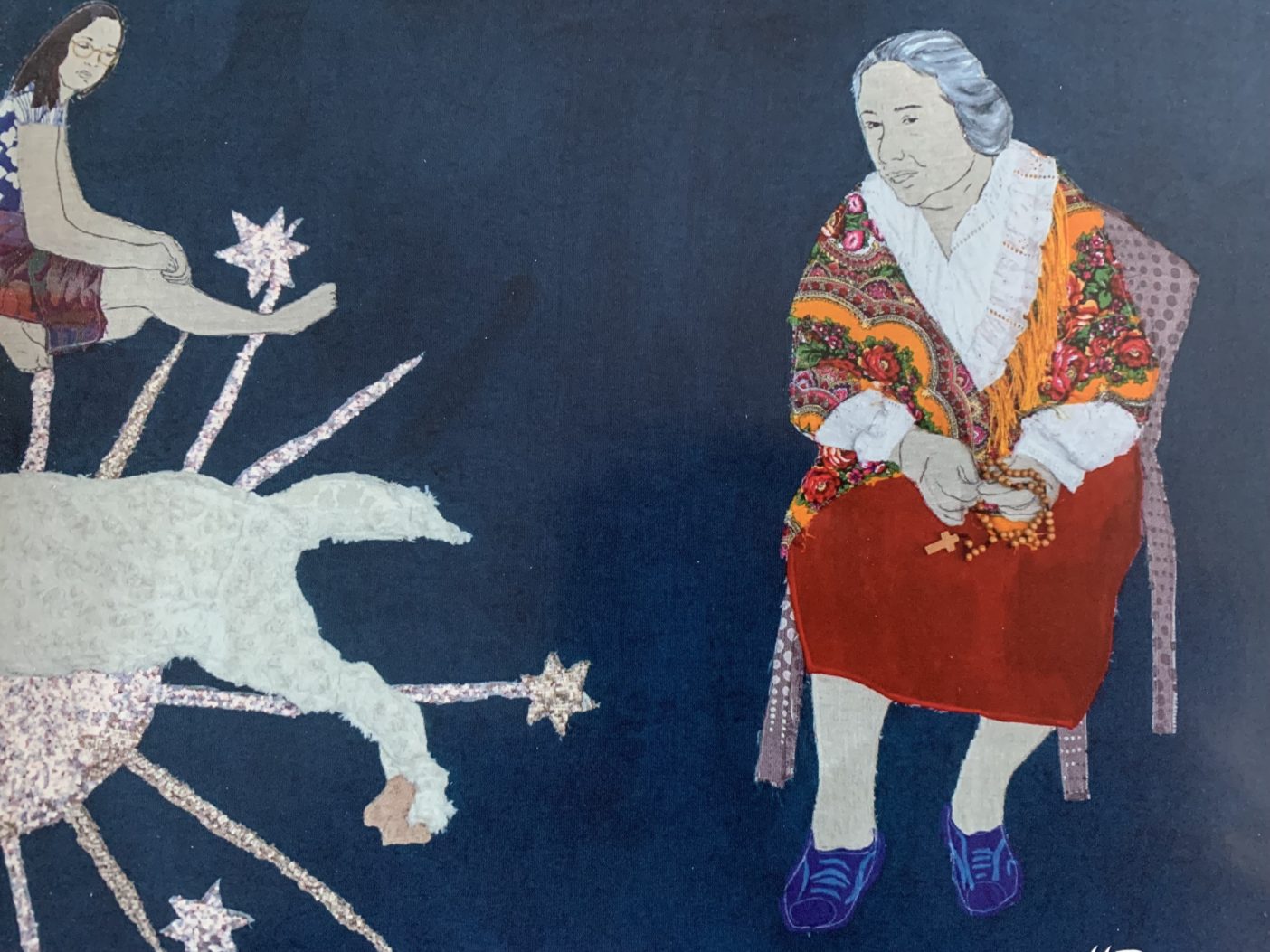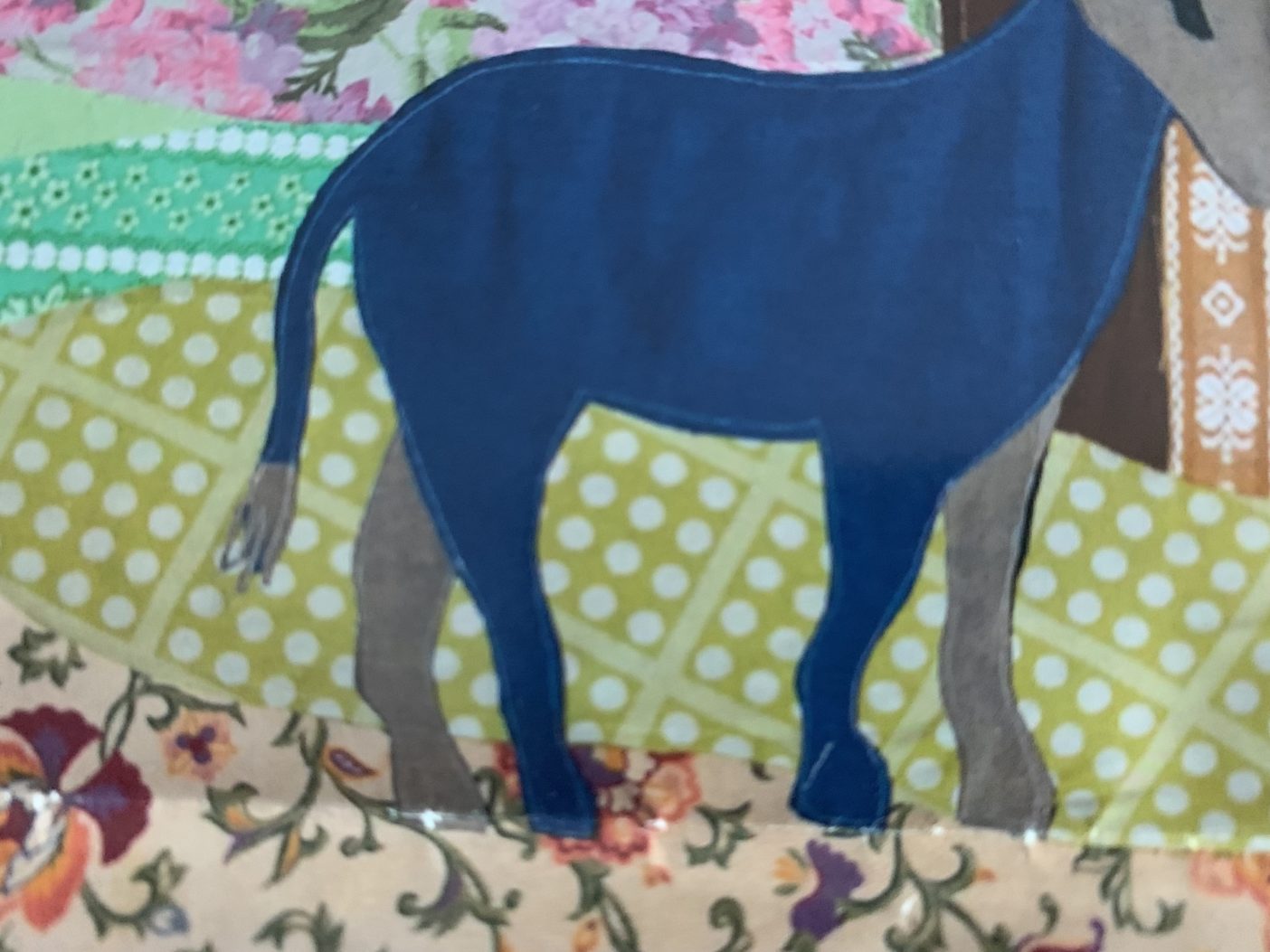Malgorzata Mirga-Tas alla Biennale di Venezia: la stoffa ricamata del lungo viaggio degli zingari
Al padiglione della Polonia alla Biennale di Venezia l'incanto di Malgorzata Mirga-Tas: la prima volta di un’artista rom.

Al padiglione della Polonia alla Biennale di Venezia l'incanto di Malgorzata Mirga-Tas: la prima volta di un’artista rom.

(English translation below)
Quattro pareti ricoperte di tessuti ricamati, colorati, epici. Varcare il padiglione della Polonia alla Biennale di Venezia (fino al 27novembre ’22) è davvero un Re-enchanting the world, subito avviluppati dal materiale creativo più vissuto – la stoffa respira, ci veste, la lavoriamo da millenni, ce la possiamo strofinare addosso, ondulata e gonfia ha le tre dimensioni di un bassorilievo – al cospetto delle tante tappe del viaggio degli zingari.
Paesaggi, narrazioni, funerali, eroi, e tanto altro viene cucito ed esaltato cromaticamente da Malgorzata Mirga-Tas, che alla Biennale taglia un traguardo anche più importante di un Leone d’Oro: in centoventisette anni di edizioni, centoventisette, è la prima artista rom a rappresentare un padiglione nazionale.
Eppure, sono oltre venti milioni, e la più numerosa minoranza tra i cittadini dell’Unione Europea. Una perdita, per il mondo dell’arte, tanto maggiore, trattandosi di un popolo rewriter per vocazione, che si riscatta di continuo attraverso il suo riscrivere la realtà, rifiutandosi di assomigliare a tutti gli altri, a differenza di tutti noi. Un’ostinazione che si paga cara, se si pensa che solo nel 2007 la Biennale ospitò un Padiglione Rom, Paradise Lost, il primissimo del genere, che non ebbe seguito.
Per farsi spazio in tanto ostracismo, Malgorzata ha lavorato per mesi come una certosina chiusa negli ampi spazi di un albergo dismesso sulle rotte polacche della Mitteleuropa.
Chi è riuscito a entrare in quel gigantesco laboratorio, narra di essersi trovato di fronte a una donna indaffarata, ispirata, dotata di un talento formidabile nel sapere assemblare colori e creare colpi d’occhio eccezionali nel riassumere storie di viaggi, anime di nomadi.
Chi oggi entri nel padiglione polacco ai Giardini veneziani, capisce subito la gloria di questo successo, l’avere svuotato il sacco in decine di metri di arazzi, dando corpo alla narrazione degli zingari così sempre negata, e ispirata a modelli nobili come le stampe di Callot e soprattutto il ciclo di affreschi di Palazzo Schifanoia.

Perché questo padiglione ribalta gli stereotipi, come fa anche il manifesto che gli ha dedicato la versione polacca di Vogue, forse memore di uno splendido libro Bury Me Standing, che una splendida giornalista newyorchese di Vogue, Isabel Fonseca, dedicò ai suoi anni di ricerca vivendo con i Rom in Europa.
La Biennale deve ringraziare le istituzioni polacche per aver scelto Malgorzata come rappresentante che parla a nome non solo del suo paese, ma di un’identità europea e cosmopolita da sempre esclusa – e a cui ho dedicato l’ultimo capitolo, Zingari, del Mag-book di Rewriters Solidarietà: come riscrivere l’immaginario contemporaneo, curato da Monica Di Sisto.
Tutti passi necessari per demolire il più duro dei pregiudizi, perché nell’Europa di oggi siamo ancora a quando, nella sua Cosmographia Universalis, il geografo Sebastiano Mūnster scriveva sull’arrivo dei primi zingari: “correndo l’anno di Cristo 1417 ecco che cominciano ad apparire degli uomini brutti, neri e cotti dal sole. Indossano vesti sudice e sono lesti nel rubare; soprattutto le donne” . Eccola qua, una donna zingara: si chiama Malgorzata Mirga-Tas. E non ci interessa nemmeno che sia donna, zingara, polacca, europea, ma solo che è una grande artista.

ENGLISH VERSION
The Polish Pavilion at the Venice Biennale, the first time for a gypsy artist.
Four walls are covered with embroidered, colorful, epic fabrics. Entering the Polish pavilion at the Venice Biennale is truly a Re-enchanting the world exercise, being immediately enveloped in the most experienced creative material – fabric breathes, it dresses us, we have been working it for millennia, we can rub it on ourselves, wavy and swollen, it has the three dimensions of a bas-relief – in the presence of the many stages of the journey of the gypsies.
Landscapes, narratives, funerals, heroes, and much more are sewn and chromatically enhanced by Malgorzata Mirga-Tas, who at the Biennale reaches an even more important milestone than a Golden Lion: in one hundred twenty-seven years of editions, one hundred twenty-seven, she is the first artist Roma to represent a national pavilion. Still, Roma people are over twenty million, and the largest minority among the citizens of the European Union. So far the world of art has been missing them, such a loss, since they are a “rewriter” people by vocation, which redeems itself continuously, reshaping the world and refusing to “look like everyone else”, unlike all of us. A stubbornness that pays dearly, if you consider that it was only in 2007 that the Biennale hosted a Roma Pavilion, Paradise Lost, the very first of its kind, which had no follow-up.
To make her own way against such ostracism, Malgorzata worked for months in the wide spaces of a disused hotel on the Polish routes of Central Europe. Those who have managed to enter that vast laboratory, tell of having found themselves in front of a busy, inspired woman, gifted with a formidable talent in knowing how to assemble colors in gigantic formats and create exceptional eye-catchers in summarizing travel stories, nomadic souls. Whoever enters the Polish pavilion at the Venetian Gardens today immediately understands the glory of this success, having emptied the sack in tens of meters of tapestries, giving substance to the narrative of the gypsies so always denied, and inspired by noble models such as the prints of Callot and above all the fresco cycle of Palazzo Schifanoia.
Because this pavilion overturns stereotypes, as does the poster dedicated to it by the Polish edition of Vogue, perhaps reminiscent of a splendid book Bury Me Standing, which a splendid New York Vogue journalist, Isabel Fonseca, dedicated to her years of research living with Roma in Europe.
La Biennale must thank the Polish institutions for having chosen Malgorzata as a representative who speaks on behalf not only of his country but of a European and cosmopolitan identity that has always been excluded – and to which I dedicated the last chapter, Gypsies, of the Mag-book of Rewriters Solidarity: how to rewrite the contemporary imagination, curated by Monica Di Sisto.
Those are all necessary steps to demolish the harshest of prejudices because in today’s Europe we are still at a time when, in his Cosmographia Universalis, the geographer Sebastiano Mūnster wrote about the arrival of the first gypsies: “Running the year of Christ 1417, to appear ugly men, black and baked by the sun. They wear filthy robes and are quick to steal; especially women.” Here she is, a gypsy woman: her name is Malgorzata Mirga-Tas. And let’s not care that she is a woman, a gypsy, a Polish, a European, but only that she is a great artist.
